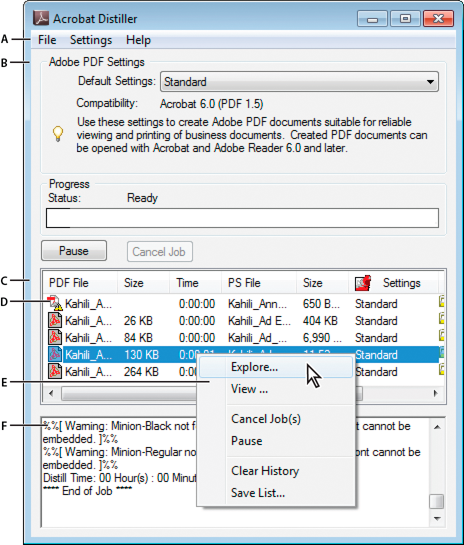

(Again, that’s starting from the root of your system.) Do NOT place it in the folder en.lproj. Place this file in Library > Printers > PPDs > Contents > Resources. You might also locate a copy for download from the Web.Ģ. (That’s starting from the root of your system, not from your user directory.) You can also get it from the Acrobat Pro 9 app itself if you choose “Show Package Contents” from the contextual menu and then go to Contents > MacOS > SelfHealFiles > AdobePDFPrinter > PPDs > Contents > Resources > en.lproj. You might find it on a backup of your computer at Library > Printers > PPDs > Contents > Resources > en.lproj. Find a copy of ADPDF9.PPD, the PPD file that the latest Acrobat Pro 9 versions remove. More after the jump! Continue reading below↓įree and Premium members see fewer ads! Sign up and log-in today.įortunately, there are ways to recover Adobe PDF’s PPD and make it permanently available to CS apps. However, for those who need to know more, I recommend you also go to Alan’s blog post for further suggestions:

However, recently Alan has posted a good summary of these instructions which I’ll re-publish here.
Adobe 9.0 ppd for mac how to#
In the comments to my original posting, various suggestions were made about how to find and reinstall the old ADPDF9.PPD file that the latest Acrobat 9 versions remove. CS5 no longer recognizes PPD files installed in a location that worked for InDesign CS4 and earlier. It should work to choose “Device Independent” instead, but it doesn’t.Īn additonal complexity was added with InDesign CS5.

But without the PPD for Adobe PDF, I have no way to create PostScript for oversize pages like book covers. For instance, Lightning Source, the POD printer I use for my books, wants my book cover files to be run through Acrobat Distiller, which means first creating PostScript files from InDesign. That’s all well and good for general use, but it doesn’t satisfy every case.
Adobe 9.0 ppd for mac pdf#
Newer versions of Acrobat Pro 9 have even removed the old Adobe PDF driver entirely, along with its PostScript Printer Description (PPD) file.įor example, InDesign writer and publisher Aaron Shepard wrote in his blog: Subsequently, you could use the Adobe Distiller application, still available with all Acrobat Pro versions, to turn the PostScript file into a PDF file. Using the old Adobe PDF printer when creating a PostScript file allowed you to create a page of any size. These workflows can require creating PostScript files for various paper sizes. However, people use many different workflows for print, and some of them require using older RIPs or using InDesign’s Print Booklet feature. In summary, I wrote, “What you need to know is that in Snow Leopard, the Acrobat team replaced the functionality of the Adobe PDF printer with an Automator function in the Print dialog called Save as Adobe PDF.” For most of us Mac users who blithely continue to choose File > Export > Adobe PDF, these changes won’t affect us.
Adobe 9.0 ppd for mac mac os x#
One of the most popular postings I’ve done in the last couple years was one I wrote a little over a year about changes in the creation of Adobe PDF files under Mac OS X 10.6 (Snow Leopard).


 0 kommentar(er)
0 kommentar(er)
